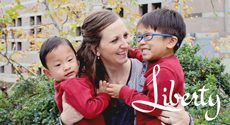Chapter 4: Connecting Principles
To recap, I am reviewing a lengthy DVD series on your behalf and giving you the “Cliff Notes” version (part 1 here, part 2 here). Because when you are parenting a child from tough places and in tough places, ain’t nobody got time to do a literature review and hunt down answers! Wherever you are, I am confident of this, that the God who knows every hair on your head is mindful of you and your child, because HE is always attached, always present, and always engaged. He is looking to make eye contact with you today, to gaze softly in measured steps that you can handle. He knows what you need.
…..
…..
The overriding message of Chapter 4 is that in order to change or correct behavior, we have to be connected. In order to be connected, we have to be mindful of our own emotions and thoughts, as well as those of our children. Even the really hard ones or ones that may make us feel ashamed or fearful. Once we acknowledge our reality, there are ways out and into progression.
Connecting Through Play:
Play reshapes behavior and it is fun! Healthy children play unfettered and freely. Traumatized children do not. They simply do not know how and need to be taught. Games disarm fear and play produces development, which produces learning and new memories. Joy is released for both parent and child. It seems simple but it is the real thing. Even a simple game of catch or blowing bubbles can erase a tough morning. Play is not to be underestimated. I actually had a graduate course on the subject, so trust me, you can feel like an intelligent educator of your children when you bust out those Legos and Little People! Play is legitimate and vital to growth and bonding.
Be Approachable:
This principle seems simple enough but we have to be intentional in making it happen. We must position our body towards our child and be present in what they are asking or needing. We must be self aware of our voice and tone, as well as our posture. The trainers in the series suggested leaving a tape recorder on the kitchen counter in the morning to listen to your voice and to discover if it is an approachable and kind tone or all business meeting agenda breakfast rush tone (YIKES!). If you are brave enough to try this, my hat is off to you!
Make Eye Contact:
At – risk children struggle with eye contact. To help them in this vital attachment principle, we need to lower ourselves to their field of vision and gaze softly at them. Our gaze must not be needy or piercing, but gradually looking and then looking away to develop comfort and increase sustained eye contact. A light “feather touch” under the chin from parent to child can cue the child to look at the mom or dad’s eyes when speaking. Phrases like, “Let me see those great eyes” and “I don’t remember what color your eyes are – are they orange?” can help bridge the comfort level in looking at one another. In our house we get silly with statements like, “I’m really really close! I see your eyeball!” which produces laughter and giggles as our eyes almost touch! We also play mimicking games with eye expression and copycat faces, imitating characters in books and looking at one another’s facial expressions to see who matches the character the best. We must listen actively and be present in response to small attempts at eye contact and connection.
Match Your Child:
Commit as much as possible to look for ways to match your child. Sit like them, talk like them, eat the same candy or brush your teeth like them. This is a primitive way to engage but a powerful one. Sometimes simply following their lead can avert an almost near break down from a child. If she gets on the floor yelling, I might get on the floor too which takes an almost “near fit” into giggles.
Respect Need for Personal Space:
Can I get an “Amen!” Sorry, their space, not ours! A child from tough places may need some space because of fear, shame or sensory overload. Ask permission for contact and remember that it is not personal if the answer is a “no.”
Set the Bar for Success:
Set the bar for success at a level where the child can succeed. Praise the child in the small victories and bump the bar a little higher. This seems logical but can be mind breaking when “there shouldn’t be a need at this point for a fit thrown over getting in the van!” There obviously still is a need so set the bar at something to obtain that is manageable and has a high probability for success.
Stick Together:
This principle is my favorite because I had a “runner” and wish I would have thought of this! Make yarn (or any other material) “buddy ribbons” and learn to safely navigate simple tasks like walking to the mailbox or going to get shoes on together with matching and connected arm bands. It is a tangible tool that enforces the truth that families stick together. The series spoke about verbal cues once the buddy ribbons are not needed, such as “We stick together!” “No hurts,” and “We have fun!” Buddy ribbons are a fun way to practice being close and connected while working in tandem.
Give a Voice to Your Child:
The goal in this principle is to allow the child to have a voice, and to accept and honor the voice when it’s used. The principle is to allow even a “delayed voice” to open the doors to deeper layers of places truly needing a voice. For example, a loud and angry voiced, “I’m so mad,” if allowed and honored (“Thank you for using your words”) can lead to, “Why did I get left on a street corner?” which can lead to “Why did my mother not want me?” A voice accesses layers that children desperately need to heal.
Follow Through On Promises:
Following through promotes trust. Make some promises that we can keep so our children know we will follow through. Simple rewards or expectations build trust and security.
One of the last lines spoken in this chapter was, “What we are asking is not easy.” (That’s giving YOU a voice!) Baby steps friends. We are with you and in it together.
— Photography by Tish Goff



























Really great advice.
wow.. the internet is an amazing thing.. I just thought to myself.. Ugh! I just need the “cliff notes” to all of this Trust Based parenting stuff RIGHT NOW so I googled “cliff notes TBRI”.. thinking I was ridiculous for typing that in and here it is! This is great and there is so much here I have been forgetting about!